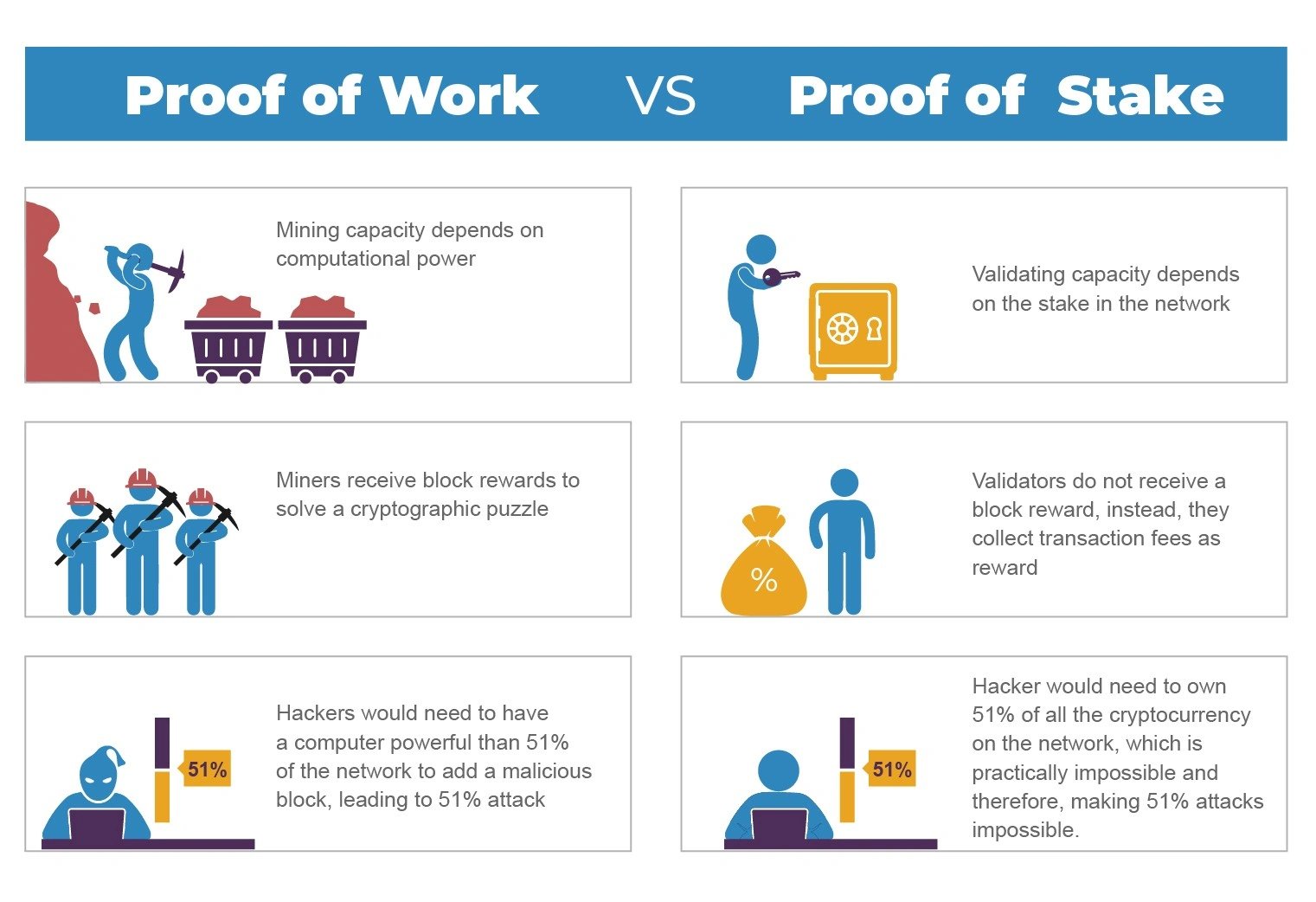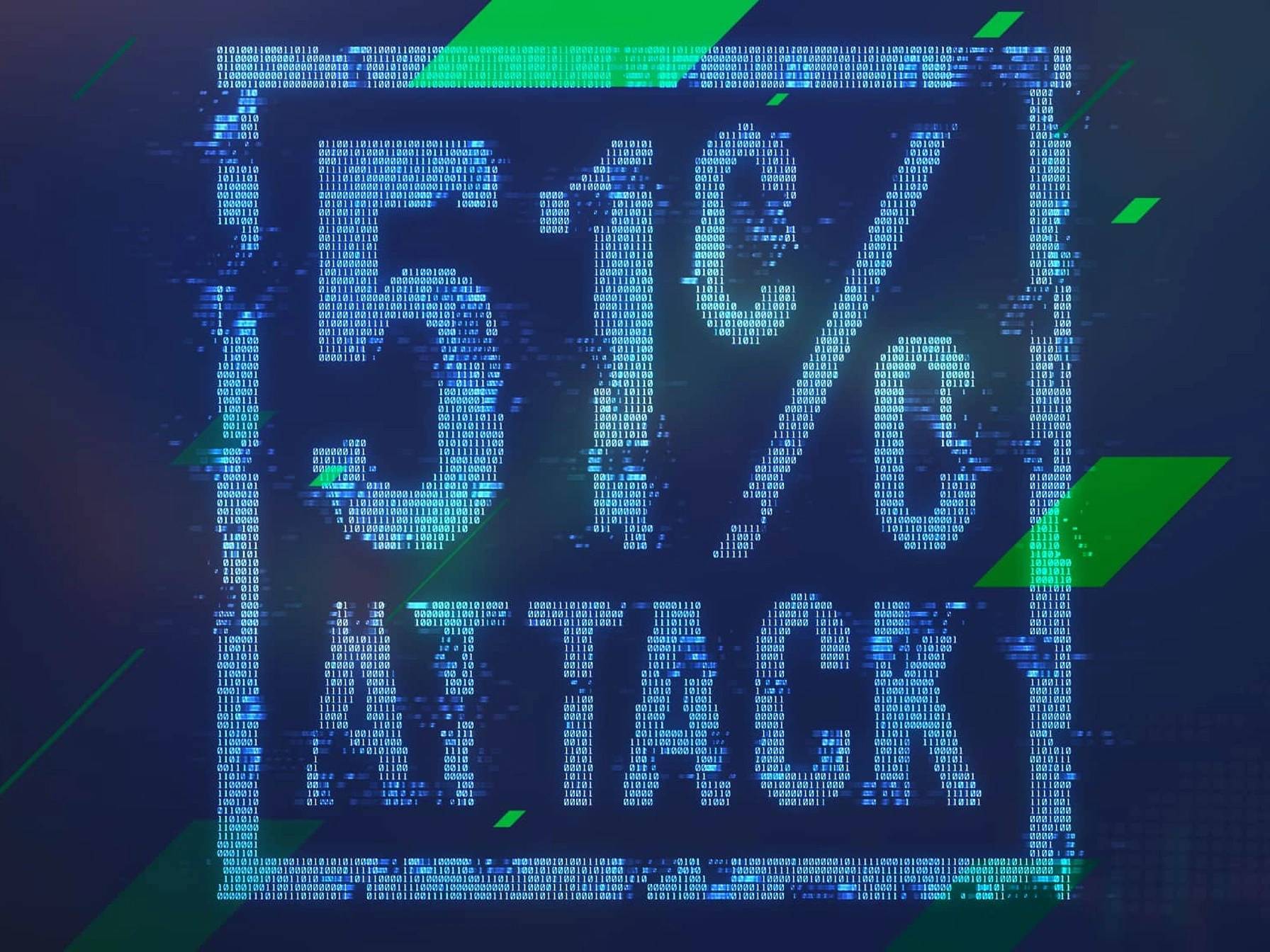위키 구독하기
Share wiki
Bookmark
51% Attack
에이전트 토큰화 플랫폼 (ATP):에이전트 개발 키트(ADK)로 자율 에이전트 구축
51% Attack
51% 공격은 블록체인(https://iq.wiki/wiki/blockchain) 네트워크의 총 채굴(https://iq.wiki/wiki/mining) 해시율 50% 이상을 보유한 채굴자 연합이 블록체인을 공격할 때 발생합니다. 이 그룹이 네트워크 노드의 51%를 장악하면 이론적으로 블록체인(https://iq.wiki/wiki/blockchain)을 수정할 권한을 얻게 됩니다.[1]
개요
블록체인(https://iq.wiki/wiki/blockchain)은 어떤 개인이나 특정 그룹도 네트워크를 통제하지 못하도록 하여 분산화를 달성합니다. 이러한 분산 구조는 블록체인 생태계의 모든 참여자가 블록체인의 현재 상태에 대해 합의해야 하기 때문에 중요합니다. 광범위하게 분산된 네트워크 참여자 간의 만장일치 합의가 필요하다는 것은 블록 상태의 진정성에 대한 높은 수준의 확실성을 확립합니다.[2]
51% 공격은 그룹이 암호화 퍼즐을 푸는 데 사용되는 계산 능력인 네트워크 해싱 전력의 50% 이상을 장악하는 블록체인에 대한 의도적인 공격을 말합니다. 그런 다음 이 그룹은 정확한 시점에 수정된 버전의 블록체인을 네트워크에 도입합니다. 이론적으로 네트워크는 공격자의 네트워크 장악력 때문에 이 변경된 블록체인을 수락할 수 있습니다.[1][2][3]
51% 공격의 영향
감소된 채굴 보상
51% 공격에서 거래는 검증되기 전에 취소될 수 있습니다. 이는 이중 지불로 이어집니다. 공격자들이 자신의 몫을 가져가면서 정상적인 채굴자들은 네트워크 업데이트로 인한 수익이 줄어듭니다.[4][2] 블록체인에 대한 51% 공격은 암호화폐의 평판에 악영향을 미쳐 투자자들이 암호화폐를 매도하게 하고 가치가 하락할 수 있습니다.[5][6]
네트워크 중단
블록체인이 거래를 검증하기 위해 작업 증명(PoW) 메커니즘을 사용하는 한, 가해자는 블록의 확인 및 순차적 배열을 방해하여 네트워크를 의도적으로 중단시킬 수 있습니다.[4] 51% 공격은 채굴자의 계산 능력에 상당한 부정적 영향을 미칩니다. 결과적으로 거래가 승인되고 블록에 기록되는 데 시간이 더 오래 걸립니다. 결과적으로 블록체인 네트워크가 손상되어 공격자가 채굴자보다 빠르게 거래를 실행할 수 있습니다.[4]
51% 공격 방지
블록체인은 51% 공격을 방지하기 위해 여러 전략을 사용합니다. 그러한 전략 중 하나는 더 많은 참여자가 네트워크에 참여하고 자체 노드를 운영하도록 유도하여 강력한 네트워크 커뮤니티를 구축하는 것입니다. 더 많은 참여자가 자원을 기여할수록 단일 개체가 네트워크를 지배하는 것이 더 어려워집니다.[3][4]
소규모 블록체인 네트워크에서는 단일 채굴자가 다수 참여자로서 지배할 수 있습니다. 작업 증명(PoW) 합의 메커니즘을 사용하는 블록체인 네트워크는 일반적으로 채굴자가 정기적으로 장비를 업데이트해야 하는 요구 사항을 구현합니다. 이를 무시하면 블록 보상을 받지 못하고 네트워크 내 다른 채굴자보다 뒤처질 수 있습니다. [4]
51% 공격의 위험을 완화하기 위해 블록체인 네트워크는 지분 증명(PoS) 합의 메커니즘을 선택할 수 있습니다. 이는 일반적으로 작업 증명(PoW)보다 더 안전한 대안으로 간주됩니다. 공격자가 PoW 블록체인에서 대부분의 채굴력보다 많은 양의 스테이킹된 암호화폐를 확보하는 것이 더 어렵기 때문입니다.[4][5][8]

과거 51% 공격 사례
대부분의 51% 공격은 소규모 암호화폐를 대상으로 합니다. 전문가들은 채굴력의 절반 이상을 장악하는 데 드는 상당한 비용 때문에 주요 암호화폐가 성공적인 51% 공격의 피해자가 될 가능성이 적다고 제안합니다. 다음은 과거에 51% 공격을 경험한 블록체인 네트워크입니다.
- 2018년 비트코인 골드(BTG)에 대한 공격으로 1,800만 달러 상당의 통화가 이중 지불되었습니다. 2020년 BTG는 또 다른 51% 공격을 받았습니다. 이틀 만에 블록체인(https://iq.wiki/wiki/blockchain)이 두 번 재구성되어 이중 지불 활동이 발생하여 상당한 재정적 손실을 초래했습니다. 그러나 이 공격은 추가 손실을 방지하기 위해 신속하게 중단되었습니다. [4][6]
- 2016년 이더리움의 하드 포크에서 등장한 암호화폐인 이더리움 클래식(ETC)은 2020년 51% 공격의 피해를 입었습니다. 이 사건으로 수백만 달러가 도난당한 것으로 보고되었습니다.[6]
- 비트코인 SV(BSV)는 2021년 세 번의 공격을 받았습니다. 이러한 공격으로 해커는 네트워크를 장악하여 최신 블록을 조작하거나 삭제할 수 있었습니다.[6]
잘못된 내용이 있나요?
